

Information Technology (IT) Pioneers
Retirees and former employees of Unisys, Lockheed Martin, and their heritage companies
People Deceased, Chapter 19
1. Introduction
Some people have chosen to write about a colleague who has passed away. We've also extracted pertinent IT Pioneer information from a few obituaries. These are listed and linked at the right. Inputs about other 'Pioneers' or comments added to these snippets of our pioneers' lives are welcome.
Note: Tom Brokow honored 10 people in his book "The
Greatest Generation." Lowell Benson's opinion is that had Mr. Brokow
known Arne Cohen, Jack Hill, Bill Norris, Don Ream, Sid Rubens, and
Erwin Tomash - at least one of them would have been included in his
book.
2. Obituary Logs*
The VIP CLUB newsletters have obits of former employees or their spouses whom have been reported as having passed away during the previous month or two. Each year at the November UNIHOGs/Technologists luncheon the planning committee reads a compilation of these 'Co-workers'.
In memory of our Legacy colleagues:
2024,
2023,
2022,
2021,
2020,
2019,
2018,
2017,
2016,
2015,
2014,
2013,
2012r1,
2011,
2010,
2009,
2008,
2007,
2006,
2005, and
2004.
Alphabetical
listing*, initiated by Paul Dickson, formatted by Lowell Benson,
and updated by Jim Andrews.
*Obits reported after
6/30/2024 will be in future newsletters and
updated listings.
3. Testimonials/Obits
3.1 Rollie Arndt
Today I got over to the U of M campus and found
that 'Wall of Discovery.' It's outside the Electrical Engineering and
Computer Science building. It's actually part of a very long walk, called
the Scholars Walk, which spans the campus east to west and cuts across
the Northrop Auditorium-to-Coffman Union mall. It was installed in 2006.
You can read about it at
http://www.alumni.umn.edu/Wall_of_Discovery.html.
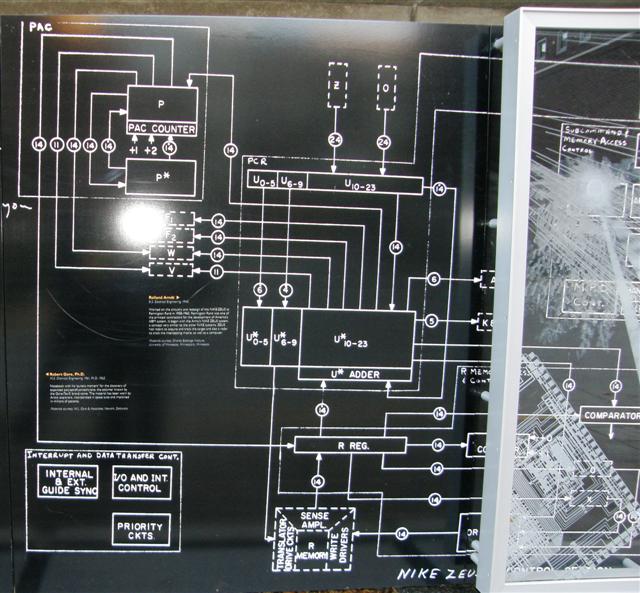 The first name to jump out to me was Rollie Arndt. Seymour Cray is there
too. Also Walter Brattain is there for the for the transistor. The Discovery
wall web site contains the following words about Mr. Arndt: "Rolland
Arndt worked on the circuitry and redesign of the NIKE ZEUS
at Remington Rand in 1958-1960. Remington Rand was one of the principal
contractors for the development of America’s ABM system. It began
with the Army’s NIKE ZEUS system, a concept very similar to the
other NIKE systems. ZEUS had radars to acquire and track the target
and also a radar to track the intercepting missile, as well as a computer. "
[by Dick Lundgren]
The first name to jump out to me was Rollie Arndt. Seymour Cray is there
too. Also Walter Brattain is there for the for the transistor. The Discovery
wall web site contains the following words about Mr. Arndt: "Rolland
Arndt worked on the circuitry and redesign of the NIKE ZEUS
at Remington Rand in 1958-1960. Remington Rand was one of the principal
contractors for the development of America’s ABM system. It began
with the Army’s NIKE ZEUS system, a concept very similar to the
other NIKE systems. ZEUS had radars to acquire and track the target
and also a radar to track the intercepting missile, as well as a computer. "
[by Dick Lundgren]
Mr. Arndt was a VIP Club member and our annual
participant in the Unihogs/Turkey luncheons. He passed away in March,
2007 at age 80. I felt sadden at his passing, had worked with him briefly
in the summer of 1963. It should be noted that Rollie also worked on
the ERA engineering team which created the UNIVAC II from the UNIVAC
I, he was pictured on Al Reiter's web site -
copied to our site for
posterity. The photo at the right was taken by me, the original came
from the four boxes which he had donated to the Charles Babbage Institute.
[LABenson}
![]()
3.2 Jim Bergum
Submitted by Lee Purrier via Al Peterson
Very sorry to hear about Jim he was a gem among fine jewelry.
If you ever have the chance to tell his family - let them know that
he contributed more as an individual than any other computer scientist
I met in almost 40 years, and he never even made anyone feel uncomfortable
in his presence. I will spread the word to the old group.
Couldn't help but look back on the period that we worked together
on EPLRS and even before that on various MTASS/CMS-2 stuff and I wanted
to write something down that may be a bit different from the tributes
paid to Jim following his untimely passing. If I could speak to his
parents and immediate family I would say something like this. Jim Bergum's
contributions to the readiness of our military - Army, Marines, and
Navy - went far beyond the engineering excellence he provided. I met
Jim in 1991 when I was the Project Head of the multi-service program
called EPLRS, a very complex computer/radio system that provided position
location and communication among the combat elements. At the time, Hughes
had spent 18 years and several billion dollars getting the system to
the point of almost being useful but was in danger of being cancelled
because of cost, enormous size equipment and recurring technical problems.
I had no real help among the 50 or so people at Camp Pendleton so I
contacted Al Peterson to see if his team could provide some sorely needed
assistance. In short, he sent Jim out to reprogram the software in a
big computer to demonstrate that it could operate effectively in a much
smaller one which Hughes and all others said was not possible. Jim made
it work in less than six months and launched a modernization program
that saved the program. From that point on, whenever there were hurdles
to overcome, schedules to be met that my own team couldn't seem to accomplish,
I would call for Jim and he would spend a few days out here in San Diego
and leave with everything humming.
Although this may sound like ordinary engineering work, it had
the profound effect of saving many Soldiers and Marines lives and injury
during the Iraq conflict. Having saved this very critical system that
was the backbone of General Frank's command and control capability allowing
him to direct the forces intelligently and, in many cases, out of harm's
way. The contributions of this system cannot be overstated and it may
not have been there if Jim hadn't been called to action.
In forty years in the computer business, I never met a more dedicated,
competent, engineer and simply great guy. Lee Purrier
![]()
3.3 Robert P. Blixt:
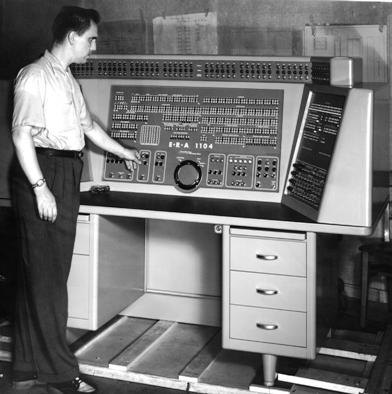 Bob
Blixt passed away unexpectedly on December 4th, 2007 after a two week
illness. Bob graduated from Roosevelt High School in Minneapolis, later
was graduated from Macalester College with an Electrical Engineering
degree. He served in the Navy, Air Force, and Army during World War
II and the Korean War. Bob was one of Minnesota’s computer pioneers
shown here just before the 1953 shipment of an ERA 1104, the BOMARC
Missile Guidance Computer. During his 35 years at ERA and UNIVAC, he
was a mentor to many younger engineers. His systems management skills
were recognized in the P-3C and S-3A program developments.
Bob
Blixt passed away unexpectedly on December 4th, 2007 after a two week
illness. Bob graduated from Roosevelt High School in Minneapolis, later
was graduated from Macalester College with an Electrical Engineering
degree. He served in the Navy, Air Force, and Army during World War
II and the Korean War. Bob was one of Minnesota’s computer pioneers
shown here just before the 1953 shipment of an ERA 1104, the BOMARC
Missile Guidance Computer. During his 35 years at ERA and UNIVAC, he
was a mentor to many younger engineers. His systems management skills
were recognized in the P-3C and S-3A program developments.
We’ve lost more than another computer pioneer! We’ve lost
a friend and a co-worker.
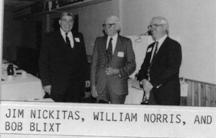
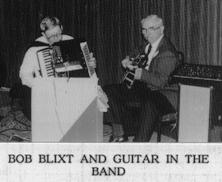 In
1992, he entertained at the VIP Club annual Christmas dinner-dance [left].
Guitar playing was a life long avocation. He always enjoyed jazz, a
little blue grass or a classical guitar music. Bob was active
on the Unihogs/Turkey committee, shown [right] in 1992 with speaker
Bill Norris and event photographer, Jim Nikitas.
In
1992, he entertained at the VIP Club annual Christmas dinner-dance [left].
Guitar playing was a life long avocation. He always enjoyed jazz, a
little blue grass or a classical guitar music. Bob was active
on the Unihogs/Turkey committee, shown [right] in 1992 with speaker
Bill Norris and event photographer, Jim Nikitas.
Thanks Bob for your many years of friendship both in and out of the
office. [Submitted by Lowell Benson & Bernie Jansen]
3.4 About Pat Casey:
I only knew Pat by his association with our boss, Vern Leas, back in 1956-57. Vern was hired by RRU to set up the operation known as Wire Tabs. Up until then the computers; 1101, 1103, 1105 and the UNIVAC II were wired from schematics and logic drawings. The odds of any two having the same electrical characteristics and therefore operational characteristics were infinitesimal - therefore the need for Wire Tabs. Pat and Vern were good friends back then. The last practitioner of Wire Tabbing that I knew was Merwyn Alferness and he was classified as a Physical engineer. [By Jim Hyslop]
3.5 Arnold Cohen
- as extracted and edited from the August 10, 2003 Star Tribune obit
section:
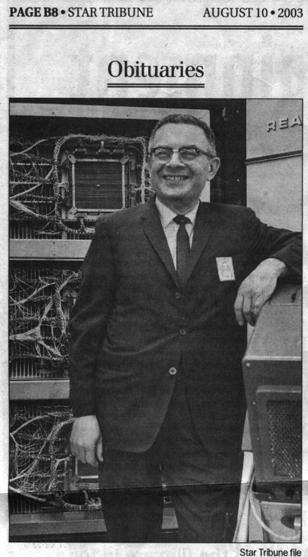 Arnold
was solving engineering problems for computer hardware in the Twin Cities
when computers barely existed. He is considered one of the founding
engineers of Engineering Research Associates (ERA) which became part
of the Remington Rand Corp. in the 1950s. That company then became the
UNIVAC division of Sperry Rand, now known as UNISYS. ERA was started
in 1946 by a group of Navy 'code-busters' including William Norris,
who later founded Control Data Corp.
Arnold
was solving engineering problems for computer hardware in the Twin Cities
when computers barely existed. He is considered one of the founding
engineers of Engineering Research Associates (ERA) which became part
of the Remington Rand Corp. in the 1950s. That company then became the
UNIVAC division of Sperry Rand, now known as UNISYS. ERA was started
in 1946 by a group of Navy 'code-busters' including William Norris,
who later founded Control Data Corp.
An early project was figuring out what eventually was patented
as "selectively alterable digital storage on revolving magnetic drums."
That meant having a way of locating a bit of information you want to
change then being able to change it, said Sid Rubens, who also joined
ERA in 1946. The patent awarded to Cohen and two other became basic
in the field. Cohen led a system design that became the Atlas I, believed
to be the first stored-program electronic digital computer actually
shipped to a customer site, according to "Computer Pioneers", published
by the Institute of Electrical and Electronics Engineers.
In October 1950, the Atlas I - all 2,700 vacuum tubes of it -
was sealed in a railroad car and shipped to Washington, D.C. according
to Warren Burrell who worked with Cohen. The customer was a unit of
the Navy that later became part of the National Security Agency.
In the early 60s, Cohen was invited to the Massachusetts Institute
of Technology (MIT) to participate in Project MAC, or Multiple Access
Computer and Machine-Aided Cognition. Part of the work was getting computers
to talk to each other. When he returned to UNIVAC a year later, he started
wok on the first multi-computer system which was sold in 1965 to United
Airlines for reservations work.
In 1971, Cohen became assistant dean for industrial and professional
relations at the University of Minnesota's Institute of Technology.
He helped develop an early version of distance education via TV and
telephone hookups because IBM in Rochester wanted to offer technology
courses on-site. {Editor's note: UNIVAC/UNISYS personnel also participated
with the University's UNITE classes in Plant 8 - see Keith Myhre's career
summary.}
After retiring from the university in 1979, he
was active in founding the Charles Babbage Institute, a center for the
history of information processing, now part of the University of Minnesota.
{Editor's note: Dr. Cohen is mentioned in several other publications
which chronicle the early years of ERA.} [LABenson]
![]()
3.6 Fred Hargesheimer
(1951-1978 employee of ERA, Remington Rand, Sperry UNIVAC)
Fred Hargesheimer passed away On Thursday December 23rd, 2010 in Lincoln Nebraska where he was in a hospice near his son, Richard's home. Fred's career is documented in a Legacy publication written by Ed Nelson. His last formal communication with the Legacy Committee was in 2007 as documented in section 3.2 of the Oral Interview page. His obit from an on-line posting is:
"LINCOLN, Nebraska (AP) — Fred Hargesheimer, a World War II
Army pilot whose rescue by Pacific islanders led to a life of giving
back as a builder of schools and teacher of children, died Thursday
morning. He was 94. Richard Hargesheimer said his father had been suffering
from poor health and passed away in Lincoln. On June 5, 1943, Hargesheimer,
a P-38 pilot with the 8th Photographic Reconnaissance Squadron, was
shot down by a Japanese fighter while on a mission over the Japanese-held
island of New Britain in the southwest Pacific. He parachuted into the
trackless jungle, where he barely survived for 31 days until found by
local hunters. They took him to their coastal village and for seven
months hid him from Japanese patrols, fed him and nursed him back to
health from two illnesses. In February 1944, with the help of Australian
commandos working behind Japanese lines, he was picked up by a U.S.
submarine off a New Britain beach. After returning to the U.S. following
the war, Hargesheimer got married and began a sales career with a Minnesota
forerunner of computer maker Sperry Rand, his lifelong employer.
But he said he couldn't forget the Nakanai people, who he considered his saviors.
The more he thought about it, he later said, "the more I realized what
a debt I had to try to repay." After revisiting the village of Ea Ea
in 1960, he came home, raised $15,000 over three years, "most of it
$5 and $10 gifts," and then returned with 17-year-old son Richard in
1963 to contract for the building of the villagers' first school. In
the decades to come, Hargesheimer's U.S. fundraising and determination
built a clinic, another school and libraries in Ea Ea, renamed Nantabu,
and surrounding villages. In 1970, their three children grown, Hargesheimer
and his late wife, Dorothy, moved to New Britain, today an out-island
of the nation of Papua New Guinea, and taught the village children themselves
for four years. The Nantabu school's experimental plot of oil palm even
helped create a local economy, a large plantation with jobs for impoverished
villagers. On his last visit, in 2006, Hargesheimer was helicoptered
into the jungle and carried in a chair by Nakanai men to view the newly
found wreckage of his World War II plane. Six years earlier, on another
visit, he was proclaimed "Suara Auru," "Chief Warrior" of the Nakanai.
"The people were very happy. They'll always remember what Mr. Fred Hargesheimer
has done for our people," said Ismael Saua, 69, a former teacher at
the Nantabu school. "These people were responsible for saving my life,"
Hargesheimer told The Associated Press in a 2008 interview. "How could
I ever repay it?"
Besides Richard, of Lincoln, Hargesheimer, a Rochester, Minnesota, native,
is survived by another son, Eric, of White Bear Lake, Minnesota, and
a daughter, Carol, of Woodbury, Minnesota; by a sister, Mary Louise
Gibson of Grass Valley, California; and by eight grandchildren and 10
great-grandchildren."
From Legacy Committee member, Don Lovely: "Yes, I did see the St.
Paul article on Fred Hargesheimer. I sat beside him his last year or
two at Sperry. I just talked to his daughter Carol whom I know reasonably
well. No funeral. He was cremated and his ashes will be spread over
his vineyard as were his wife’s. The vineyard next to his California
home immediately bought his acreage so they could expand. Fred had spent
his last two months in an assisted living facility in Lincoln, NE. His
eye sight had almost completely failed. When I visited him in Grass
Valley in 1997, I spent an hour showing him how to use a PC and data
processing so he could get started writing his book. He visited me several
times when he was back in the Twin Cities. Fred was a saint if ever
there was one. Don "
![]()
3.7 Higginbotham, Grover Stanley
[Obit edited from the July 10, 2007 Minneapolis Star Tribune] age
92, of Edina, Minnesota and Naples, Florida, died July 8, 2007. One
of the y oungest graduates United States Naval Academy, class of 1935.
He had a distinguished 29-year career as a United States naval officer.
His first ship was the battleship U.S.S. Arizona, BB-39, from 1935 to
1938 where he served in the Gunnery and Engineering departments.
During WWII, he served aboard the battleship U.S.S. Texas, BB-35, and
was promoted to commanding officer of the destroyer U.S.S. Albert W.
Grant, DD-649, in the Pacific where he received the Bronze Star. After
the war he attended the Army Guided Missile School in Ft. Bliss, TX
and then graduated from the Naval War College in Newport, RI. Later
notable career assignments included staff officer to the Chief of Naval
Operations in the Pentagon; Chief of Staff to Commander Cruiser Division
Two, United States Sixth Fleet; commanding officer U.S.S. Ponchatoula,
AO-148, Pearl Harbor, Hawaii, then largest oil tanker in the Navy;
commanding officer Destroyer Squadron 25 "The Pineapple Fleet", Pearl
Harbor, Hawaii, then largest destroyer squadron in the Navy; and Chief
of Staff to Commander United States 7th Fleet, Yokosuka, Japan.
oungest graduates United States Naval Academy, class of 1935.
He had a distinguished 29-year career as a United States naval officer.
His first ship was the battleship U.S.S. Arizona, BB-39, from 1935 to
1938 where he served in the Gunnery and Engineering departments.
During WWII, he served aboard the battleship U.S.S. Texas, BB-35, and
was promoted to commanding officer of the destroyer U.S.S. Albert W.
Grant, DD-649, in the Pacific where he received the Bronze Star. After
the war he attended the Army Guided Missile School in Ft. Bliss, TX
and then graduated from the Naval War College in Newport, RI. Later
notable career assignments included staff officer to the Chief of Naval
Operations in the Pentagon; Chief of Staff to Commander Cruiser Division
Two, United States Sixth Fleet; commanding officer U.S.S. Ponchatoula,
AO-148, Pearl Harbor, Hawaii, then largest oil tanker in the Navy;
commanding officer Destroyer Squadron 25 "The Pineapple Fleet", Pearl
Harbor, Hawaii, then largest destroyer squadron in the Navy; and Chief
of Staff to Commander United States 7th Fleet, Yokosuka, Japan.
Upon retirement from the Navy as a Captain, he worked for 15
years in management for Sperry Univac at their offices in Salt Lake
City, UT; Los Angeles, CA; and St. Paul, MN. In Salt Lake City he earned
a Master's Degree in Engineering Administration from the University
of Utah and was made a member of the Phi Kappa Phi honorary society.
While in Los Angeles he headed the development of the on-board computer
system for the S-3A carrier-based anti-submarine aircraft built by Lockheed.
He continued to provide consulting services to Univac after retirement.
He and Vivian traveled extensively with destinations to China, Europe,
and our around-the-world cruise. His family lost a loving husband and
father; our communities lost a dear friend; and our country lost an
honored patriot and a wonderful ambassador. [LABenson]
![]()
3.8 John 'Jack' Lindsey Hill
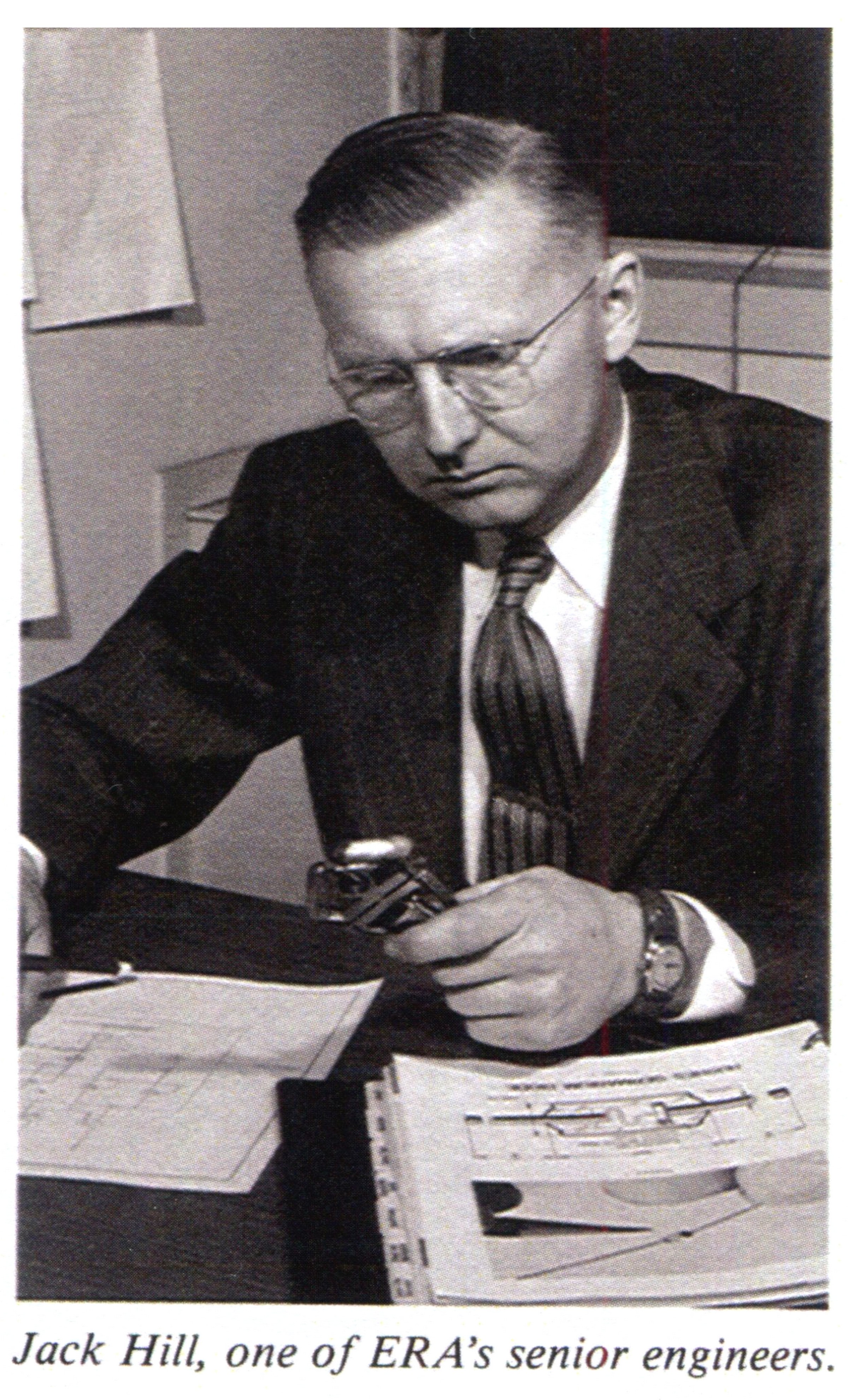 Jack, we honor you as a real Information
Technology Pioneer – thanks for our Legacy start.
Jack, we honor you as a real Information
Technology Pioneer – thanks for our Legacy start.
59 years ago, the fall of 1950, Jack and others completed design, assembly, and factory test of the Atlas I computer at Engineering Research Associates (ERA) in St. Paul, MN. In October that year they took it apart and shipped it [in a sealed railroad box car.] During November ’50 they re-assembled it at the Communications Supplementary Activity-Washington (CSAW) facility – Jack had stated that they were home for Thanksgiving. The ATLAS was fully operational in December 1950 performing cryptography algorithms and other intelligence processing for CSAW - shrouded in secrecy for over 25 years by CSAW's successor, the NSA. "This was the world’s first stored-program computer to be delivered and operational in a customer’s facility" [History books credit one or two other laboratory units as the first stored-program computer.] The prototype of the ATLAS drum memory is now on exhibit at the Minnesota Historical Society.
In 1951 ERA received government permission to market a commercial version of the ATLAS which Jack identified as model 1101 because it was designed on contract Task #13. [13 in binary is 1101] The ERA 1101 with updates became the UNIVAC 1102, …, 1108 - a computer line which still operates today, the UNISYS 2200 series.
Jack, your compatriots of the ‘Original Geek Squad’ will
miss you! Memorial service was to be at 2 p. m. on 17 October, 2009. Don
Weidenbach spoke for the Legacy Committee at the service. ![]() [LABenson]
[LABenson]
From Jack's daughter Bonnie Hill,
written in response to a January 10, 2021 Minneapolis Star tribune
article that featured Don Weidenbach.
Dear Mr. Brown,
 Thank you for the story about Don Weidenbach and ERA. Don spoke at my father’s funeral, as my father worked with him as an engineer at
ERA after the war. My Dad, John Lindsay Hill, was an engineer on
the UNIVAC 1101 -
Wikipedia. He went by Jack, and was quite a bit older than Don.
He died in 2009, just three months short of 100 years. I think
there is much more to the story of ERA that would be interesting to
people today. Jack was part of a team, and is on the left in this
drum-memory photo.
Thank you for the story about Don Weidenbach and ERA. Don spoke at my father’s funeral, as my father worked with him as an engineer at
ERA after the war. My Dad, John Lindsay Hill, was an engineer on
the UNIVAC 1101 -
Wikipedia. He went by Jack, and was quite a bit older than Don.
He died in 2009, just three months short of 100 years. I think
there is much more to the story of ERA that would be interesting to
people today. Jack was part of a team, and is on the left in this
drum-memory photo.
Extensive oral histories of some of these amazing men are available
at the Charles Babbage Institute at the UMN, which also has a
collection my Dad’s personal papers. Because these men had security
clearances, much of their story remained secret, even to Jack's wife
Catherine, until the mid 1980s. That is when my brothers and I
finally learned many details of our Dad’s life, Oral
history interview with John Lindsay Hill. The Babbage Center has
also published a book about the work of ERA. I also have a
collection of his papers, including his life story, as told to
charitable organizations. He was homeschooled by his grandmother
until his early teens when the family immigrated to Minnesota from
Canada. In Minnesota he completed high school as valedictorian of
White Bear High School and then went to two years of technical
school at Rochester Institute of Technology, before a winding path
of jobs, military service, and then ERA.
One memory that has stuck with me is a lecture we were given at the
dinner table when we were school children. Dad said “Your friends’
parents will tell you that computers will take away their jobs. I
want you to know that the computer is a tool like a hammer. It can
be used for good or evil.”
None of Jack and Catherine’s three children married engineers, but
they became an architect, a physician and an engineer. And all three
of us love to fix things. My brothers, Peter and David, know many
things in addition to what I have shared with you. Another
good source is Tom Misa, former Director of the Babbage Institute.
Thank you, and perhaps you’ll find there are more stories you can
tell about the early computer days,
Bonnie Hill
3.9 Dick Huberty
Dick passed away in September, 2011, survived by wife and family.
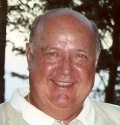 from
Jim Rapinac - I worked with Dick in Lyle Franklin's PERT group in the
early 60"s. Dick later was in Navy marketing. He was a part of my DSD
marketing organization from 1978 until I left in '87. Great guy, great
family man. Dick and Lyle were very close friends. Ciao for Now! Rapp
from
Jim Rapinac - I worked with Dick in Lyle Franklin's PERT group in the
early 60"s. Dick later was in Navy marketing. He was a part of my DSD
marketing organization from 1978 until I left in '87. Great guy, great
family man. Dick and Lyle were very close friends. Ciao for Now! Rapp
from Lyle Franklin: Thank you, Lowell. I first met Dick in 1956 when
I was an instructor in training. Dick was the expert on the Model 35
Tektronics display and later an expert in Tactical Air Command Systems
training. Dick and I also shared the Jack and Jill bathroom at Shaw
AFB BOQ while teaching the TACS specialist courses. Dick then joined
Lyle Gilbertson and worked on the TACS large screen display. Dick was
in the PERT group and later in the Navy Marketing group. Thanks to his
efforts the 1219 became the NAVORD standard computer. From there he
joined Navy Program Management. Dick also was an instructor with St.
Paul Vocational Technical schools as well as pursuing a degree in the
U of M night school program. We bowled together, played cards together,
picnicked together. We were not only close associates at work we were
good friends. Dick was a HAIL FELLOW WELL MET. Those of us that were
fortunate enough to know him will miss him greatly. Lyle
![]()
3.10 Earl C. Joseph
As copied from the Minnesota Futurists web site - {Editor's Note:
Earl had indicated that he'd get us a career summary at last December's
'First Friday' Luncheon. Unfortunately he passed away on 2/24/2007 before
he could edit his biography for our use.}
"Earl's credits include: A pioneering scientist, management consultant, &
futurist in many fields; 3 computer patents; the systems architect of
5 major computer systems; authored chapters in 50 books & had published
over 500 technical, managerial, educational, and scientific papers;
makes over 100 presentations per year [over 4000 in his career]. He
has been featured in the Wall Street Journal, USA Today, Business Week,
U. S. News & World Report, Science News, and many other national
publications. Has received two contracts from the U. S. Air Force to
advance the state-of-the-art of strategic management and futuring efforts.
Earl was the Science Guest of Honor at the 25th anniversary meeting
of MINICON 25. In 1996, during the 50th year of computers, Earl was
honored with his picture on a poster for the event, elected to Beta
Phi Beta, and has received numerous honors from various professional
associations. The Wall Street Journal claims Earl was the first in Corporate
America to have the title of “Futurist,” Business Week claims
he was one the first to use the phrase “smart machine” and
forecast that the central processing unit (CPU) of computers would become
a “bulge in the cable.” He was a member of an early 1970’s
team that initially studied and outlined the design of The Internet.
He convinced the Defense Department at a Naval Academy workshop to fund
the development of Very High Speed Large Scale Integration (VLSI/VHSI)
circuit chip technology that lead to today’s chip advances.
Earl's main consulting services were in strategic & visionary
management: forecasting, futures research, COMPUTERS, issues management,
planning, teaching, training, etc.. He researches the future of many
areas including the future of libraries. Earl’s professional activities
includes: the founder and a current director of the Minnesota Futurists
(a chapter of the World Future Society); Founding Chairman of the Board
of Directors of the Minnesota Computer Industry Coalition (MCIC); member
of the IEEE, ACM, American Association for the Advancement of Science,
Robotics Section of Society of Manufacturing Engineers, the Society
for General Systems Research and the founding president of its Minnesota's
chapter; past Chairman of a Metropolitan Young Adult Ministry; President
of the Twin Cities chapter of the ACM for 1976/77 and 1986/87; Co-Program
Chairman of the 1981 Society for General Systems Research International
Conference; General Chairman for ACM 75 conference, and the World Futures
Society’s 1991 conference “Creating the 21st Century.”
Earl is an adjunct professor and a visiting lecturer at the University
of Minnesota designing and teaching graduate level courses on alternative
futures. He is the former futurist in residence at the Science Museum
of Minnesota; a distinguished visiting lecturer for the IEEE Computer
Society; lecturer for DPMA, WFS, ACM and ASM.
Earl is listed in American Men and Women of Science; Who's Who
in the World, Midwest, Finance, & Management. Listed in the National
Reference Institutes for Who’s Who among Human Service and Education
Professionals. Board Member of: Chairman of the Board of Future Systems;
on the Board of Directors of Dorn Swenson Meyer [Colle & McVoy Public
Relations], Chairman of the Board of Advanced Energy Technology Company
[and its founding CEO] and Expo Graphics. Earl has designed and taught
100’s of university level courses in the areas of computers, business,
management, marketing, advertising, entrepreneurship, futures, and other
topics. Taught at all education levels; K-12, college and graduate.
Until 1983, Earl was with Sperry Univac for 32 years as a computer
scientist including 20 years as a staff scientist/futurist. Earl directed
and managed large complex computer and communications projects, departments
and divisions and performed the system design, logic design, programming
and manufacture of a number of computers. Earl is an internationally
recognized leader as a futurist, manager, scientist, computer architect,
professor, systems designer/engineer, lecturer and consultant in the
diverse fields of future studies, human resource development, computers,
AI, peace, medical, social, agriculture, economics, business, education,
nanotechnology, expert systems, defense, and manufacturing. He is the
founder and Editor of the journal Futurics; Advising Editor for the
journals Futures, Human Resource Development Quarterly, and the Journal
of Cultural and Educational Futures; Editor of the newsletter Future
Trends; Former Editor of the Systems Trends newsletter and MCIC Newsletter;
has been featured worldwide on 100's of TV and radio programs and in
science fiction books. The ERA 1101 computer started the computer industry
in Minnesota and Earl was its first programmer. Earl’s picture
at the 1101 computer console was on a poster at the 1999 Minnesota state
fair. In 1960 Earl had in operation the first embedded computer, now
known as a “smart machine,” it was for the Nike Zeus Multifunction
Array Radar and missile detection system for a Anti-Ballistic Missile
system." [LABenson]
![]()
3.11 William 'Bill' Keye
 Obit
at the left scanned from the St. Paul Pioneer Press by LABenson, webmaster.
Obit
at the left scanned from the St. Paul Pioneer Press by LABenson, webmaster.
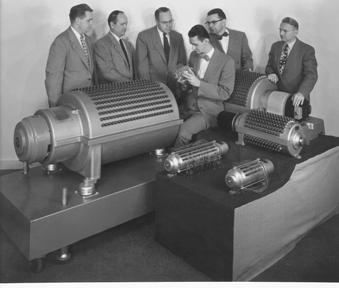
William Key is the last of the Drum Development Management group pictured at the right. The people in this photo at the right are from left to right: Bill Keye, Arnie Hendrickson, Bob Perkins, Frank Mullaney, Arnold Cohen, and Jack Hill.
Yes, Lowell, You had it right. I can confirm that this is our Bill
Keye. He supervised two of my bosses at ERA/Univac and also hired me
into Control Data. He was a good man.
Jerry Williams
![]()
3.12 Robert E. 'Bob' McDonald
edited from the April 2000 VIP Club newsletter.
Bob started with Engineering Research Associates in 1953 and
retired in 1980. He was the first person from the Twin Cities to progress
to higher management in Blue Bell and New York. He had a total of 27
years experience in the computer industry at the time of his retirement.
Mr. McDonald became operations manager for Remington Rand Univac
in 1956, general manager of the Univac Military Department in 1959,
and general manager of all Univac operations in St. Paul in 1963. In
1964, Bob was named vice president and general manager of the Univac
Defense Systems division in St. Paul. He was appointed president of
Univac in 1966, and served in that position into 1971 (UNIVAC was renamed Sperry UNIVAC in the early 1970's).
Sperry Corporation recognized McDonald's successful leadership by naming
him Executive Vice President of Sperry in 1968. He was elected President
of Sperry in 1972 and President and Chief Operating Officer in 1974.
In 1979 Bob was elected a Vice Chairman of Sperry Corporation. [LABenson]
![]()
3.13 About Jack Reid:
Just as an aside, I thought you might be interested
in a little more of Jack Reid's background. First, he was a great teacher
for the week we had him. Of all the instructors that I had over 42 weeks
of training, (24 at Ft. Monmouth, NJ and 18 at Aberdeen Proving Grounds,
MD) he was the only one who's name I could remember. He was drafted
into the Army and because of his background was sent to school to learn
how to trouble shoot and repair a Sperry designed fire control system
called the T38 Sky sweeper.
Basically it was a 75mm gun with a combination Acquisition/Tracking
radar on the left side of the mount and our electro-mechanical analog
computer on the right side. It could fire one 75mm round every second
and was very accurate for maybe the first 4 or 5 seconds. Then the effects
from firing; i.e., concussion and vibration knocked the computer out
of alignment. In 1956 when I was stationed at Misawa AFB, there was
a battalion of Sky sweepers guarding the base in addition to the battalion
of M33s that I supported. It was interesting to watch the T38s at the
firing range (out over the Pacific). A B-26 would flyby towing a target
sleeve. A T38 would open fire, the first round would put a hole in the
sleeve - the second would blow apart the knuckle that held the sleeve
to the tow cable and then before the crew shut it down it would start
tracking up the cable shooting chunks off of it.
Anyhow, after Jack finished school, he got shanghaied to Iceland
for a year. When his year was up he was sent back to the states. He
only had a few months left and thought/hoped he would be discharged.
He wasn't and instead was sent to Ft. Monmouth to instruct for his remaining
time. Not a happy camper. The first day he strolled into class, he was
in a Khaki class A uniform minus the tie. He walked up to the blackboard,
picked up a piece of chalk, wrote his name and the class title and then
in large letters below, scrawled out "I hate this bleeping (or something
comparable) Army!" We got along fine with him and learned a lot. I was
happy I didn't have to work on that system though. That computer would
have driven anyone nuts.
He was/is a great guy although I don't remember having had much
contact with him at Plant 1. I left there at the end of 1967 and started
work in commercial. I don't have any idea of what became of him. [by
Jim Hyslop]
![]()
3.14 Dr. Sidney Rubens:
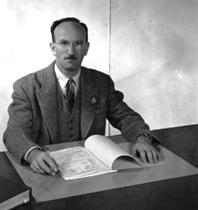
Paraphrased from the St. Paul Pioneer Press, December 16, 2007
Dr. Rubens passed away December 13th, 2007 at the age of 97. He received
his Physics BS and PhD from the University of Washington. While doing
post doctoral work at USC and UCLA, he was recruited to join the Naval
Ordinance Laboratory where he invented methods to degauss ships to make
them immune to magnetic mines. After WWII, he joined Engineering Research
Associates in St. Paul, MN. He became director of research in charge
of classified and large scale computer systems. One of his lab's early
development was thin-film magnetic memory, essential to all computers.
After retiring in 1975, he became an honorary Professor of Electrical
Engineering, mentoring graduate students. Dr. Rubens was awarded over
30 U.S. Patents. He was the inaugural recipient of the IEEE Magnetics
Society Information Storage Award [1987] and received the IEEE Society
Millennium Medal for lifetime achievement [2000.] He was on the advisory
board of NASA. Photo circa 1955 from Curt Nelson's collection.
Sid was one of four originators of the First Friday
luncheon group in the mid-50s. It wasn't until the mid-60s that this
group allowed Chuck Homan [#5] and Warren Burrell [#6] to join them.
This luncheon group continues to meet today, until November 2007 had
passed a cell phone around the table so that old friends [about 20]
could chat with him. [by LABenson]
![]()
3.15 Robert 'Bob' Wesslund:
Paraphrased from family 'mini-bio' picked up by Ed Nelson at Bob's Memorial.
Robert Evan 'Bob' Wesslund, 4/22/27 to 9/16/2008.
Bob's early interest in electronics included work at radio station KOWH
[Omaha Nebraska] for which he earned credit toward his high school diploma.
He served in the Navy during the close of WWII from '45 to '46 as an
assistant electrician. He entered the U of Omaha in 1946, later transferred
to U of Nebraska to receive a BSEE in 1950. He worked as an engineer
at radio station KFAB during college.
BBob began working for Engineering Research Associates in November 1951 in St. Paul, MN. As ERA transitioned to UNIVAC, he worked on several computer development projects. He received two patents during his time at ERA/UNIVAC: 'Reading Saturatable Cores' and 'Magnetic Core Devices'. These two patents helped develop early disk drives for reading and writing to tape-driven computer memory systems. These formed the basis for more recent patents that influence today's hard drive and data storage technology.
In 1959, Bob became Vice President (VP) of Engineering for the newly formed Transistor Electronics Corporation, a Minneapolis firm developing and manufacturing computer industry components.
In 1960, he began a 26-year career with Control Data Corporation. He started there as a senior engineer, was promoted to director of product development, then later to VP of several departments before retiring in 1986 as VP for Technology Exchange.
After retirement, began consulting including co-ownership of Mobile Radio which provided radio communications systems to area businesses. As an amateur radio operator [ham operator], he became one of the leading members of the Northern Lights Radio Society. In 2004, that group created the annual Robert Wesslund Award, presenting the first year's honor to him, "for his many years of significant contributions to the Northern Lights Radio Society and for his continuous work with mentoring others in the World Above 50 Mhz."
In closing, Bob will be missed by his former co-workers
and friends from the Original Geek Squad monthly meetings and the Annual
Unihogs/Uniturkeys luncheons. [LABenson]
![]()
3.16 John Markfelder:
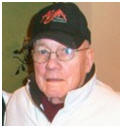 John
was a friend of mine for 48 years. I came to work in April of 1964,
hired by Phil Foster to work in the Installation Design group. I was
assigned to a slightly balding guy who showed me the ropes. That mentor
was John Markfelder. We never missed a lunch and we enjoyed quite a
few beers together at Slingers' and the Esquire for their noon special
soup and ham, beef or turkey sandwich specials.
John
was a friend of mine for 48 years. I came to work in April of 1964,
hired by Phil Foster to work in the Installation Design group. I was
assigned to a slightly balding guy who showed me the ropes. That mentor
was John Markfelder. We never missed a lunch and we enjoyed quite a
few beers together at Slingers' and the Esquire for their noon special
soup and ham, beef or turkey sandwich specials.
I got to know John as a real worker and hustler from the very first
days when he also carried his vacuum tube case with him and repaired
TV sets on the side. He impressed me with his people skills, respecting
everyone and knowing who could make things happen. I will always remember
the little twinkle in John's eye when we reflected on special times
together.
One very special fall day, John and I flew into Grey Trout Lake in Ontario
to try to capture that unique time when the lake is turning over and
deep water trout are on the surface. We were having a once in
a lifetime fishing trip with a fish on every cast and it was the time
to find that trophy to hang on the wall. Well, John hooked
into a good one and brought him in to the floats we were fishing off
of and it was my turn to net him. Needless to say, I was not successful
in netting John' trophy trout and I got the treble hook caught in
the landing net as his trophy got away. John didn't get mad
at me but simply kept fishing. Each time since then when I brought
up the memory of his trophy trout that I'd lost for him, he simply
smiled as if to say, that's OK!
Thanks John for being a special friend. [Ken W. Nelson]
John Passed away November 11, 2011 at the age of 79, survived by
his wife, Carol. John was a Unisys retiree and long time member of the
VIP Club. Many others remember John Markfelder as the early 80's
founder of the now "Annual Univac Old Timers Reunion". [LABenson]
![]()
3.17 Erwin Tomash: by Dr. Tom Misa
Dear colleagues, I am writing with the sad news of the passing of Erwin Tomash, who died last week at his home. Erwin was a University of Minnesota EE graduate, class of 1943 [with Frank Mullaney], one of the engineer-sales people for Engineering Research Associates, an executive with Telemeter Magnetics, and a founder of Dataproducts, the notable computer peripheral manufacturer.
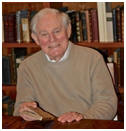 Erwin
was also the founder of the Charles Babbage Institute and for years
its guiding spirit. In the 1970s, even before he retired from Dataproducts,
he consulted with leaders in the academic, museum, and business worlds
about creating an institution to support and foster computer history.
Initially located in California, CBI's first task was finding a
permanent home. It turned out that the University of Minnesota put in
the winning bid in a national competition; see <
http://www.cbi.umn.edu/newsletter/article2.html>.
CBI moved to Minnesota in 1980, Arthur Norberg arrived the next year
as director, and the field of computer history would never be the same.
Arthur took up Erwin's plans to have CBI engage in collecting archival
materials on computer history, conducting oral histories, and engaging
in research projects. In practice, these three activities have been
complementary ones. A significant
number of CBI's 200+ archival collections have roots in an oral
history and/or CBI research project. A special issue of IEEE Annals
of the History of Computing [2001] provides additional details and perspectives,
as does the CBI Newsletter [Fall 2003] on CBI's 25-year anniversary <
http://www.cbi.umn.edu/about/nsl/v26n1graphics.pdf>
Erwin
was also the founder of the Charles Babbage Institute and for years
its guiding spirit. In the 1970s, even before he retired from Dataproducts,
he consulted with leaders in the academic, museum, and business worlds
about creating an institution to support and foster computer history.
Initially located in California, CBI's first task was finding a
permanent home. It turned out that the University of Minnesota put in
the winning bid in a national competition; see <
http://www.cbi.umn.edu/newsletter/article2.html>.
CBI moved to Minnesota in 1980, Arthur Norberg arrived the next year
as director, and the field of computer history would never be the same.
Arthur took up Erwin's plans to have CBI engage in collecting archival
materials on computer history, conducting oral histories, and engaging
in research projects. In practice, these three activities have been
complementary ones. A significant
number of CBI's 200+ archival collections have roots in an oral
history and/or CBI research project. A special issue of IEEE Annals
of the History of Computing [2001] provides additional details and perspectives,
as does the CBI Newsletter [Fall 2003] on CBI's 25-year anniversary <
http://www.cbi.umn.edu/about/nsl/v26n1graphics.pdf>
Since 1978 CBI has awarded the Adelle and Erwin Tomash Fellowship in the History of Information Technology to a Ph.D. student completing his/her dissertation. The 32 recipients, beginning with the first recipient Bill Aspray, and continuing to the most-recent Ksenia Tatarchenko. The recipients now include many leaders in our field http://www.cbi.umn.edu/research/tfellowship.html. At the University of Minnesota an additional Tomash fund supports our Ph.D. students. Erwin was also a book person. In the 1980s the CBI-Tomash Reprint Series published notable editions with expert commentaries. Some of these volumes are still available http://www.cbi.umn.edu/research/reprints.html. Then, notably, there was Erwin's personal efforts in rare-book collecting. A glimpse of his efforts is The Erwin Tomash Library on the History of Computing: An Annotated and Illustrated Catalog http://www.cbi.umn.edu/hostedpublications/Tomash/index.htm, a significant scholarly effort itself done in collaboration with Mike Williams.
With best wishes, Tom Misa December 20th, 2012.
Mr. Tomash studied electrical engineering at the University of Minnesota
before serving in the Army Signal Corps during World War II. After the
war he worked at Engineering Research Associates, a seminal computer
company, while earning an MS degree at the University of Maryland. As
a young engineer at ERA in 1950 he was responsible for the central control
system of the 1103 {ATLAS II} computer designed for the Navy. Tomash
proposed that the machine could be modified to suit a commercial market,
which it was subsequently with great success.
![]()
3.18 Dr. George Champine
submitted by his brother John
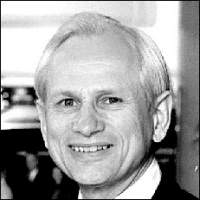 CHAMPINE, George A. Age 78 of Hudson lost his long battle with
Leukemia on March 28, 2013. He was born in Fairmont, Minnesota,
oldest child of Floyd and Genevieve Champine. He graduated from Fairmont
High School. George earned Bachelor's and Master's degrees in
Physics and a Ph.D. in Information Systems - all from the University
of Minnesota. George was a pioneer in computer technology. He was one
of the first 2,000 programmers in the world and he continued on the
forefront of information technology throughout his professional career.
As a graduate student he began work for Univac in St. Paul Minnesota,
where he wrote most of the software for the world's first airborne
computer. This computer used real-time data from radar to control the
rear turret machine guns on a heavy bomber. He was part of the software
development team under the legendary computer designer Seymour Cray
for the Univac 1103 computer. He also led teams that developed software
for the world's first ground-based digital missile guidance system
(Nile-X), and computer-controlled radar. He made major computer architecture
contributions to the Univac 1100/60 computer. George was very active
in the University of Minnesota's Institute of Technology Alumni
Society and was president during 1979-1980. He also served as one of
the founding members of the industry advisory board to the newly emerging
Computer Science Department at the University.
CHAMPINE, George A. Age 78 of Hudson lost his long battle with
Leukemia on March 28, 2013. He was born in Fairmont, Minnesota,
oldest child of Floyd and Genevieve Champine. He graduated from Fairmont
High School. George earned Bachelor's and Master's degrees in
Physics and a Ph.D. in Information Systems - all from the University
of Minnesota. George was a pioneer in computer technology. He was one
of the first 2,000 programmers in the world and he continued on the
forefront of information technology throughout his professional career.
As a graduate student he began work for Univac in St. Paul Minnesota,
where he wrote most of the software for the world's first airborne
computer. This computer used real-time data from radar to control the
rear turret machine guns on a heavy bomber. He was part of the software
development team under the legendary computer designer Seymour Cray
for the Univac 1103 computer. He also led teams that developed software
for the world's first ground-based digital missile guidance system
(Nile-X), and computer-controlled radar. He made major computer architecture
contributions to the Univac 1100/60 computer. George was very active
in the University of Minnesota's Institute of Technology Alumni
Society and was president during 1979-1980. He also served as one of
the founding members of the industry advisory board to the newly emerging
Computer Science Department at the University.
He was promoted to Director of Research at Univac, Blue Bell Pennsylvania where he managed 146 researchers. He subsequently left Univac and became Senior Vice President of Engineering at Vydec, a subsidiary of Exxon Enterprise Inc. Later he joined Digital Equipment Corp. in the Boston area. At Digital he pioneered high performance graphical workstations. In 1984 Digital assigned him to lead their research team at Microelectronics and Computer Technology Corp in Austin, Texas, and in 1986 to become Associate Project Director of Project Athena at MIT in Cambridge, Massachusetts. Out of that landmark project emerged such technologies as X-Windows and Kerberos. George published a book describing the project. George and Barbara moved to Stow at this time. He subsequently became Director of Technology for Information Systems at Digital, and when Compaq Computer acquired Digital he became Director of Technology and Architecture. Shortly after Hewlett Packard acquired Compaq in 2002 he retired at age 68. In retirement he taught computer classes, maintained websites for four non-profits, and fixed computer problems for Quail Run residents. As a volunteer at the Harvard astronomy department he photographed 80,000 pages of astronomy telescope data and was instrumental in setting up the bar code system in identifying astronomy images. George was on the board of directors for the Hudson Historical Society and The Photographic Historical Society of New England.
During George's working career, he taught many college courses
part-time, including: Physics at Hamline University in St. Paul, Project
management at the University of Minnesota, and Computer Graphics at
the
University of Texas, MIT in Cambridge, and the University of Massachusetts/Lowell.
He has written more than 30 papers published nationally and has authored
three books in the computer field (“MIT Project Athena: A Model
for Distributed Campus Computing,” “Distributed Computer
Systems,” and “Computer Technology Impact on Management”).
He also wrote four books about life in southern Minnesota and his home
town of Fairmont. He was highly respected on a worldwide basis as a
speaker on advances in computer science and technology. His interests
were photography, family history, electronic music, playing the organ,
motorcycling, canoeing, camping, astrophysics, travel, and jogging.
Survivors include his wife of 57 years, Barbara; children Renee Olson
of San Jose CA, Mark Champine and wife Lori of Westford MA, and Lisa
Paton of Hudson MA.
![]()
3.19 Charles J. "Chuck" HOMAN
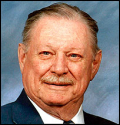
Age 84 of St Paul on March 19, 2013. Former
President and Member Emeritus of Univac/UNISYS VIP Club. He is survived
by Midge [wife of 38 years], 6 children, 18 grand children, 3 great
grandchildren. Charles Homan earned a PhD in Chemistry at Northwestern
University. He was an Eagle Scout and served in the US Army stateside
during the Korean Conflict. His church volunteerism included 40+ years
counting the Sunday contributions. Chuck was an early participant at
the First Friday lunch group [The original Geek Squad], as the 6th
person to join the original group of Dr. Sid Rubens, Jim Nikitas, Don
Nemanic, and Dr. Arnold Cohen in the late 50s. In 2009 he and Midge
were granted VIP Club Member Emeritus status in recognition of 6 terms
of CLUB service as VP, President, Past President and a dozen years coordinating
the Annual picnic. “Well done, good and faithful servant”,
Matthew 25:23. Some of this data was copied from the bulletin at his
memorial service. LABenson
![]()
3.20 Frank Kucera [1955 - 1987]
As Frank's son, my information may not be complete, but can be compiled together with my brother-in-law and others for a better picture. I was born in 1957, so some of this is hearsay occurring prior to my awareness rather than me witnessing it happening live. Probably still not complete, but better.
Frank moved to Minnesota from New Jersey to in 1955 work for a new mainframe computer manufacturer in Minnesota. I believe the location was a "former glider factory" on Prior Avenue in St. Paul. I don't know the full sequence of names, but believe Univac was used at least twice in the sequence: UNIVAC = "Universal Automated Computing Machine" or some similar moniker. During his nearly 32 years at ERA/Remington/Remington Rand/Univac/Sperry Univac/Sperry/Unisys he worked in both Federal (Defense) Systems and Commercial Operations.
The first machine dad worked on used vacuum tubes, took up a large room and a lot of power, and was a PhD project to prove it could be done. Earlier the company had merged into an existing glider company to hasten the ability to sell stock, replicated the machine, add features, and sell it. Military customers were the only ones that could afford this technology at first. The story told to us was that work as a military contractor limited what could be patented so IBM ?stole? many of Univac's secrets.
In that era, he worked two levels under Seymour Cray, who many don't know ever worked at Univac. At one point, Frank was manager in the ARTS III development, an early airliner tracking system for control towers of commercial airports. I wasn't knowledgeable of his positions very often except having an ARTS III business card at one time from dad touting a manager title. His expertise was in memory systems, and in those early days he knew Forrester who invented core memory. He knew computer pioneers Arne Cohen, Seymour Cray, Forrester and many of the early names in the fledgling industry. His expertise was mainly in technical circuitry as opposed to software or managerial. In my days growing up, I recall open houses for families of employees where drum memories were the star because they were so large, control boards had lots of lights, and pre-set questions were staged so kids would be asked oblique information (like their birthday) and the system automatically knew from that their name and other personal information. The answer came out over a line printer, all caps.
Over his career through the years, Dad worked at Eagan Township, Roseville, West 7th, and Prior Avenue locations. (They were numbered like Plant 8 but I retained the location better than the plant number). Roseville was so close to our home but he spent more years at distant locations such as starting up Eagan. I seem to recall he spent much time in Defense with military customers like the Navy, the Census Bureau, etc. When I put in two summers (1977 and 1978) as a summer intern in Eagan (I think it wasn't a Twp anymore.) To many people I wasn't Jim, but I was Frank's son. So he was widely known.
Jim Kucera (son) and Lowell Palacek (son-in-law) - current UNISYS
employee. ![]()
3.21 Donald Ream [1953 - 1955]
{Obit redacted by LABenson from on-line obit of Dignity Green Acres
Mortuary; Scottsdale, AZ.}
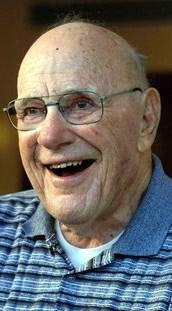
It's likely that most Minnesotans would be unaware of Don's
short stint with the company. [Harvey Taipale]
Ream, Donald L. was born 19 April, 1922, in Johnstown, PA; he passed
away on April 8, 2014 in Tempe, AZ. Don graduated from the College of
William and Mary with scholastic honors. He had been elected Student
Body President in 1944 but was unable to serve due to his Naval commission;
after he received advanced schooling at the University of Richmond,
Harvard and M.I.T. Donald served during WW II in the Philippines, Borneo
and Japan until 1946. When he returned from service and received his
degree from William and Mary; he became a cryptanalyst with the department
of the Navy and then filled one of the Governments' initial positions
for computer engineering. He was a member of the group that developed
the first digital, programmable computer in 1950. {editor's note:
ATLAS I, ERA 1101.}
In 1953 Don Ream was recruited by Remington Rand Univac to be technical
manager of their Arlington, Virginia, ERA 1101 computer center. However,
in 1955 Lieutenant Alfred Bettis managed to recruit Ream back to Navy
civilian service in the BUSHIPS Computer Design Section at the Navy
Security Station.
For the next three years Ream would work half time as project engineer
for NTDS computer development, and the following four years full time
in the same capacity. During his career, he was responsible for much
of the computer development pertaining to the Naval DOD. {editor's
note: AN/USQ-17; AN/USQ-20, 20A, 20B; AN/UYK7, and AN/UYK-20.}
He was awarded the Gold Medal by the American Society of Naval Engineers
for exceptional and outstanding service to Naval Engineering in the
advancement of the science and application of digital computers to complex
systems. Donald retired in 1982 and lived an outstanding life with friends
and family at Friendship Village in Tempe, AZ.
After his passing a small group of volunteers (retired Navy
Captains) unsuccessfully processed paper work to get a ship named
the USS Donald Ream. ![]()
3.22 Dr. Abraham Franck [1919-2019]
Abe of Edina MN passed away on 17 January at age 100. Dr. Franck was a former ERA employee and a longtime educator at the U of MN in Mathematics focused on technology. After ERA, he was the designer of the Fabri-Tek Bi-Tran Six digital trainer computer. The Bi-Tran Six was part of the U of MN electronics classes in the early 60s. Abe’s love of music led to the establishment of the Abraham Franck String Quartet at the University of New Mexico. When at the First Friday luncheons (original Geek Squad), he often spoke of playing the violin. He was a Club Life member.
3.23 Edward Doyle "Pete" Zimmer - last survivor of Control Data's original gurus
From
William "Curt" Nelson: You have likely received notice of Pete
Zimmer's passing in February at age 93, however the enclosed
Star-Tribune article gives history from the early days of our
company. I knew Pete as a friend and also knew several of the
outstanding engineers who went to CDC at that time. I was
invited to an organizational meeting in Edina and purchased 100
shares of CDC at $1 a share as did many of my fellow employees.
I could have been rich from that investment but I sold out much too
soon at $20 a share. The following is redacted from Patrick
Kennedy's 'Strib' article:
Mr. Zimmer was among the
scientists, engineers, and veterans from WWII who started the
computer industry in Minnesota. He started his career at the
pioneering computer company, Engineering Research Associates (ERA).
That St. Paul-based company was acquired by Remington Rand and later
became Sperry Rand - each was a giant in the postwar days of the
early computer industry here and elsewhere. ERA management was
frustrated with some of the autonomy the'd lost under the 'East
Coast' corporate owners thus in 1957 many of the early ERA employees
left ERA to form a technology startup company, Control Data
Corporation.
Under the leadership of William Norris and the technical expertise
of Seymour Cray, Control Data grew into one of the largest and most
infjuential companies in Minnesota. Those earliest employees
included sales, finance and suport staff plus also key technical
people like Frank Mullaney, Bill Key, Bob Kisch, Howard Sheckels and
Robert Perkins. Zimmer joined them in September 1957, assigned
employee badge # 13 - He was the last survivor of that earliest
group. CDC would eventually employ 65,000, including 5,000
party-time workers. CDC's successes attracted talented people
to the region and influenced other computer, technology and
financial companies in Minnesota. AND, a several other
successful sartup companies grew out of their association with
Control Data, {editor's Note: see right column of
http://vipclubmn.org/Spinoffs.html#Corporations.}
According to Mr. Zimmer's son, Bill, Pete had enlisted in the Navy
the day before his 18th birthday because it had the best electronics
program. He served in the Navy from 1943 to 1946 then earned a
1950 BSEE degree from the U of MN. He joined ERA and
eventually rose to be a Vice President and Chief Engineer at Control
Data. While at CDC, he was project engineer for the computers
of the submarine-launched Polaris ballistic missile system.
Later he was in charge of Control Data's 3300 line of commercial
computers. After Mr. Cray's engineering team developed the CDC
6600 at the Chippewa Falls laboratory, Zimmer and his team put the
6600 series into production at the CDC Arden Hills manufacturing
plant. By 1966, CDC was no longer a small startup company and
several early employees resigned including Zimmer to take on other
initiatives. Pete formed his own consulting company as well as
serving on the boards of three other technology companies.
{Editor's Note: Before STEM} Mr. Zimmer taught his kids coding and
BASIC programming at home and was recognized as a technology
futurist. His son said: "He told people, way before anybody
thought it made any sense, that there are going to be computers in
everybody's home." "After he retired, he became the IT guy for
lot of seniors, neighbors, and friends." Mr. Zimmer is
survived by wife Margorie (65-years) four children and five
grandchildren. {editing by LABenson, 3/20/2019.}
3.24 Charles Allan Kiesling, UNIVAC 1955 to Unisys 1993
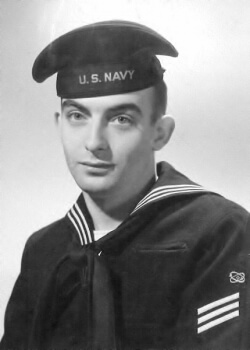 Submitted by Brian Daly of Unisys:
Submitted by Brian Daly of Unisys:
Charles Allan Kiesling, Sr, originally of Murdock MN, passed quietly
on January 2, 2014 at the age of 83. Charles is survived by
his wife, Nancy and several other family members. Charles was proud of his service with
the US Navy and his Navy family. As a crew member of the USS
Collette DD 730, he was part of the Sitting Duck Squadron at Inchon
during the Korean War. He was the most recent editor and publisher
for the USS Collette Association newsletter and enjoyed the ship's
company reunions. Over the years, Charles was very active in his
community including the Boy Scouts of America, Clan MacBean
Association of America, and the Veterans of Foreign Wars Post 5555.
Charles worked for Sperry Rand through its various incarnations, including Sperry Univac and finally Unisys in the electronics engineering and developmental department until he retired after 38 years of service in 1993. Charles' many accomplishments while working with Sperry include the creation of some of the first computer networking systems in the early 1960's for private industry and the government. He was also credited with patents US 3497760 A and US 3531796 A. He was the father of the logical expansion circuitry for display systems, or "Graphical Computer Video Card" and the flashing or "Blinking Cursor." Charles' visionary computer designs and ideas in the 1960's and 1970's helped lay the foundation for our modern computer world today.
Former co-worker, Dr. John Esch, wrote, "
I worked with Chuck in the early 1970’s on a
series of IR&D Test Vehicle computer designs. About all I remember was that he was a great
guy to work with. Unfortunately, I don’t remember having any
conversations about his blinking curser work."
Editor Lowell
Benson: I vaguely remember Chuck, I never worked directly with him but
did sit with him on a few IR&D project reviews. He is
mentioned in our Legacy Anthology by Dr. John Esch,
http://vipclubmn.org/People2.html#Esch. He is also
mentioned by Tom Soller,
http://vipclubmn.org/People9.html#Soller.
At various times Mr. Kiesling worked with Lee Granberg who holds
several patents associated with the electronics of cathode ray
tubes, including #4,081,799 Character generation system for a
visual display terminal -
http://vipclubmn.org/Patents.html#Granberg. If this hadn't
happened, then the Charles Kiesling 'blinking cursor' patent may
not have ensued.
"3.25 Gerald 'Jerry' Williams, ERA 1951 - UNIVAC 1958 then CDC 1963-79
The last VIP Club ERA employee has left us; laid to rest on
December 29th, 2023 in Northfield, MN. Jerry is from the
WWII Greatest Generation, an inventor with 7 patents, a life member
of the Club, and until 2010 a participant of the
https://vipclubmn.org/activities.html#Geeks. Our Stories
of April 2021,
https://vipclubmn.org/Articles/SatisfyingInventions.pdf, is a
career summary extracted from his auto-biography. He is also
the last of the four Ws, who were the File Computer
principal designers in the mid-50s: Jerry Williams [magnetic
storage], Bob Wesslund [arithmetic unit], Jim
Wright [control], and
Don Weidenbach [input/output].
Over 180 of these File Computers were built, the beginning of automated flight
strips for the FAA. From ERA/UNIVAC he was a co-founder of
Transistors Electronics in 1958, a Control Data employee (’63 to
’79), then a 1976 founder of Williams Sound Corporation until he
sold it and retired in 1987.
My opinion (Lowell) is that his
greatest invention is the ‘Personal P-A Broadcasting System’ which
allows those with hearing deficits to hear the spoken parts of their
church’s worship. As of 2020 more than 40,000 systems with over
300,000 receivers distributed. Bless you Jerry, may you rest
in peace - Lowell
In this Chapter
Testimonials/Obits [24] - Rollie Arndt, Jim Bergum, Bob Blixt, Pat Casey, Dr. George Champine, Abe Franck, Dr. Arnie Cohen, Fred Hargesheimer, Grover Higgenbothem, John 'Jack' Hill, Charles 'Chuck' Homan, Richard 'Dick' Huberty, Earl C. Joseph Sr., William 'Bill' Keye, Charles Kiesling, Frank Kucera, John Markfelder, Robert 'Bob' McDonald, Don Ream, Jack Reid, Dr. Sid Rubens, Erwin Tomash, Robert 'Bob' Wesslund, Pete Zimmer, and Jerry Williams.
Chapter 19 edited
8/26/2024